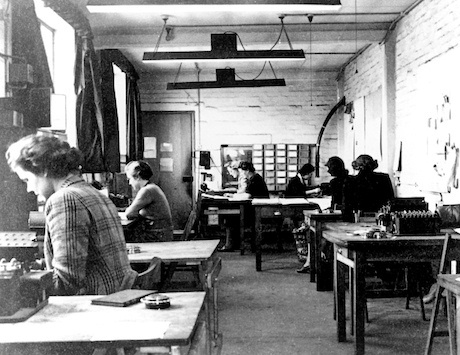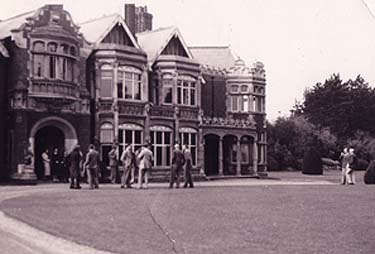‘Bletchley Park’ the once-classified home of Britain’s World War II code-breaking efforts is finally coming revealing its secrets. The once top secret facility has been turned into a time capsule museum
Bletchley Park has seen an upsurge in visitors as a result of ‘The Imitation Game‘, a movie about Alan Turing, a computer science pioneer and architect of the effort to crack Nazi Germany’s tough Enigma cipher. The film starring Benedict Cumberbatch was nominated for eight Academy Awards.
“It’s absolutely marvelous,” said Charlotte Webb, 91, who worked at Bletchley during the war. “Our story has been revived.” During the war, locals just didn’t ask questions about what went on at the one-time country estate. While the code-breakers were sworn to secrecy.

The site’s importance remained secret until 1974, when wartime intelligence officer F.W. Winterbotham published ‘The Ultra Secret’ about the effort to crack the German War Machines formidable codes.
It was only when documents about the programme were declassified that Turing’s contributions became widely known. His personal story though, was highly tragic. Convicted in 1952 on a charge of “gross indecency” stemming from his relationship with another man, Turing was stripped of his security clearance and forced to take estrogen to neutralise his sex drive. He killed himself in 1954 at age 41. He however, received a posthumous pardon by Queen Elizabeth II in 2013.
The Bletchley Park museum opened in 1994 after local historians banded together to prevent it from being bulldozed to build a supermarket. A massive ( 8m pounds/$12.2 million) renovation programme completed last year has succeeded in reconstructing the site exactly as it was in the early 40s.
Nearby is the National Museum of Computing. The museum, which has a separate entrance fee, picks up where the movie ‘The Imitation Game’ ends, linking the ultra-secret efforts of the 1940s to the mainframes of the 1960s and the rise of personal computing in the 1980s. It includes a functioning model of Colossus, the world’s first electronic computer, which helped decipher messages between the Nazi dictator Hitler and his generals.
The museum seeks to transport patrons back to the years when Turing and his colleagues /7 to help the British War effort
Inside the code-breakers’ buildings, the atmosphere is dark and surreal due to the blackout curtains. Ruffled pads of paper stamped with the British crown await a scribbling pencil. Sweaters are draped over chairs as if one of the workers, many of them members of the Women’s Royal Naval Service or “Wrens”, had just gone for tea.Visitors can see Turing’s office, complete with the coffee cup chained to a radiator and poster of Winston Churchill urging his country: “Let us go forward together.” as if Turing will come bustling in any moment.
On the lawn, loudspeakers re-create the roar of a dispatch motorbike and the drone of a Spitfire overhead. The sounds illustrate the backdrop of bustle and tension faced by the 8,500 people who worked at Bletchley Park, and the 2,000 others at surrounding outstations.
For a moment, the visitor is transported back in time. It’s 1940. Britain is at war. Churchill is the prime minister. And operation Sea Lion, the Nazi invasion of Great Britain is all but imminent.






